Is growth in dairy drinks down to the dregs? It’s certainly slowing: value sales have risen 2.4% to £144.1m, but volumes are down 0.6% [Kantar Worldpanel 52 w/e 24 May 2015]. A year ago, value and volume were up in double digits. So what’s causing the slowdown, and how can suppliers maintain consumer interest?
New products on the theoretical milk drinks fixture (there’s no such thing as one in-store site for dairy drinks) have driven value in the category this year. Innovation in premium handheld RTD products has led to an increase in average price, says Crediton Dairy’s senior category manager Abi Rogers. “Innovation has been in higher added-value areas such as coffee and protein drinks, which can be £2.89 a bottle. It’s bringing in a new consumer and that’s great for the category.”
Laura Sheard, head of marketing for dairy drinks at Frijj owner Dairy Crest, adds key NPD in the RTD flavoured milk market over the past year has included protein-enriched products, breakfast alternatives and healthier options.
“These new launches, 65 new SKUs in the last year, have raised the profile of the category,” says Sheard. However, she adds that the innovation hasn’t helped the sector’s rate of sale: “Frequency of purchase is down 1.2% on a year ago.”
Both Sheard and Rogers also point out that with 39% penetration and purchases made on average eight times a year [Kantar Worldpanel 52 w/e 21 June 2015], it’s clear that there is still significant room for growth in the dairy drinks market.
Where that growth might come from is not always as clear. For brands, recent range reviews in the mults mean having the right listings in the right retailer is as important as having the right product.
Of the big four, brands say Tesco, which remains the biggest seller in the category (it accounts for 33% of total sales), is taking a noticeably proactive approach, even if the retailer’s category value sales are up by only modest 1.3% on volumes down 3%. “Dairy drinks have witnessed a significant push within Tesco stores,” says Sheard. “They have been relocated from their previous white milk shelf siting and now sit in a minimum of three dedicated bays in larger store formats, including everyday favourites, protein and meal replacement drinks and active health drinks. Tesco has also introduced a specific section for coffee drinks.”
However, the holy grail for many RTD milks is still the soft drinks chiller. “With 43% of milk drink sales being ‘drink now’, retailers are encouraged to position flavoured milks alongside other on-the-go soft drink formats,” says Sheard.
Category value sales have fallen 10.3% at Sainsbury’s [Kantar]. Yazoo was delisted from the Sainsbury’s chilled aisle in September 2014, although it maintains a presence in ambient. “We are in talks to get it relisted as they are undertrading in this area and we believe Yazoo is a key opportunity for them to recoup lost revenue,” says FrieslandCampina trade marketing manager Helen Cridge. Yazoo’s summer 2015 redesign, which features a new asymmetric bottle designed to fit well in the hand, should assist in negotiations.
While brands fight for retailer space, own-label flavoured milk has lost 3.4% in value sales and 2.7% of volume; an inevitable result, says Crediton’s Rogers, of significant promotions by brands including Frijj, which has run half-price deals. Crediton’s own brand, Moo, is doing a “really good job”, she says, especially in smaller retailers with no own-label offering.
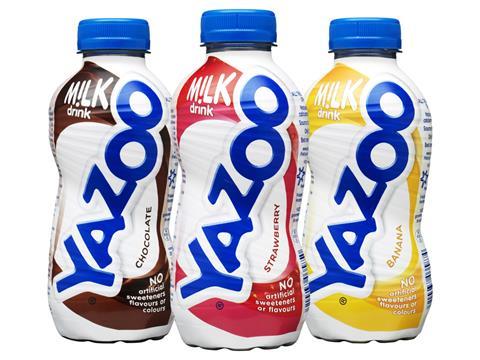
Sugar
The war on sugar continues to threaten the permissibility of soft drinks for both adults and kids. Many brands anticipate the lowering of the School Food Standards sugar limit, which currently stands at 5% added sugar or less, and although fruit-flavoured soft drinks have been the most high-profile victims of Tesco’s sugar cull, there is an obvious implication (and potential benefit) for flavoured milks.
“The role of a growing awareness of the nutritional benefits of dairy drinks over other soft drinks should not be underestimated,” says Hamish Renton, MD of HRA Marketing. “With the war on sugar blazing, this is the time for flavoured milk to take RTD share from rival carbonate and juice drinks.”
In May 2015, Arla launched chocolate and strawberry flavoured milks with 40% less sugar. “We have focused on delivering a reduced sugar product [to overcome] one of the key barriers to consumption for the category as a whole,” says Frank Mountain, Arla’s senior brand manager for flavoured milk brands. “The product contains no artificial sweeteners, colour or flavours. The great taste comes from only 2% added sugar and a natural flavour. Our marketing campaign will focus on driving trial in time for the back-to-school shop.”
“Our milkshakes are currently school-approved but we’re in development to relaunch them in the autumn with lower sugar and lower fat,” adds Greg Boyle, MD at Happy Monkey Drinks.
Frijj, the market-leading flavoured milk brand with a value of £53.6m [IRI], launched its 40% less sugar products, in Choca-a-Chocolate and Seriously Strawberry variants, in January 2015 and reports sales of £0.5m so far.
Indulgence
Products aimed at adults are losing sugar, too. In April Emmi launched no-added-sugar Espresso Zero in its Caffè Latte range, and Arla’s new Protein Chocolate Milk Drink has a lower-sugar variant. But running alongside health concerns is the indulgence trend. In March 2015 Frijj relaunched its premium Supreme line. Launched in 2003, Full On Fudge Brownie is Frijj’s star-performing SKU, worth £13.6m.
Caramel flavour is at the forefront of NPD, with the 2015 launch of Emmi’s Choco Lait Caramel, while Shaken Udder’s first NPD since 2013 was a premium Salted Caramel, and the Gü line of hot chocolate drinks made under licence by Crediton Dairy includes Salted Caramel Flavour Hot Chocolate. “Certainly with Gü we’ve seen the demand for more indulgent drinks,” says Rogers. “The standard hot chocolate is the bestseller but the salted caramel is narrowly behind. Gü has done about £650,000 in retail sales, so it’s still small, but it’s a niche product that’s bringing in a different consumer, and one of the key learnings is that people are drinking it cold as readily as they are drinking it hot.”
Less niche, but also succeeding for Crediton, are the one-litre packs of Mars and Galaxy shakes it produces under licence. Improved distribution and new listings in Asda and Morrisons have, says Rogers, boosted Galaxy’s value and volume by 50%. Mars’ smaller format drinks, made elsewhere, have seen significant range expansion to include a Toffee Revels variant alongside M&M’s Peanut, M&M’s Chocolate and Twix thick shakes, launched in May, and lactose-free and high-protein Mars shakes. “Chocolate milk remains the category’s favourite flavour with a 32% share,” says a Mars spokeswoman.
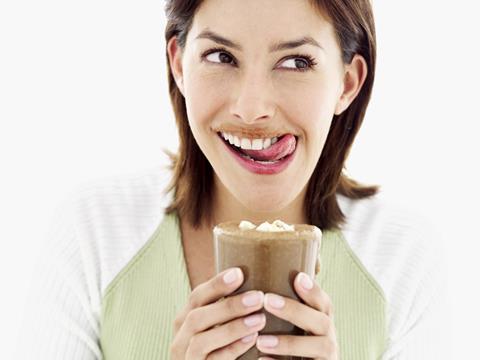
Beyond coffee
As the only purely ‘adult’ flavour in dairy drinks, coffee has dominated the grown-up element of the sector. Starbucks drinks (produced under licence by Arla) are, says commercial marketing manager Claire Irvine, performing ahead of the market. In April 2015 it launched another coffee drink, Discoveries Cappuccino, with Sainsbury’s among its listings.
Launched in April, Emmi’s strongest coffee drink Mr Big Espresso contains three large shots. “Brands looking to secure continued growth should consider capitalising on the adult consumer,” says Nicole Koller, brand manager for Emmi. “Caffè Latte Coffee is doing well and there remains a job to be done raising awareness for the iced coffee segment, which is still in its infancy - and many retailers are still waiting to be convinced of the opportunity. We’re constantly growing our market share, which is currently 24%.”
Protein
The Mr Bigs of the world have another interest in milk drinks: protein. New entrants to protein milk drinks include Arla (see left) and Mars. “The protein category continues to see strong annual growth, but manufacturers need to understand that adding protein to a drink with 48g of sugar just won’t work,” says Austin Bailey, founder of Ufit shake maker The Protein Drinks Company.
Older school player Dunns River Nurishment added 13% value sales [IRI 52 w/e 20 June 2015]. “While the classic packaging seems incongruous with the RTD bottles we are accustomed to, sales are strong and the tin format has come to be their standout feature,” says Renton.
Protein pioneer For Goodness Shakes has enjoyed a 45% rise in value on volumes up 20%, says marketing and category development director Alex Brooks. Although he emphasises the need to focus on protein’s sporty core consumer, he attributes the brand’s growing penetration to “making protein convenient, accessible, selling it in normal retailers, getting it chilled and enabling people to dip their toe in for £2.”
The potential to extend protein’s appeal hasn’t been lost on the brand, which relaunched its children’s product, Milk Shoot, as For Goodness Shakes Kids On the Go in July 2015. “We looked at Milk Shoot and didn’t feel that platform could translate. We can now use Kids On The Go to launch into categories outside drinks,” says Brooks.
The other fuller-for-longer opportunity for milk drinks is in breakfast, as Weetabix has proved with its On the Go drink, recently joined by two protein variants.
Strong distribution and solid marketing support mean it leads the sector with a 74% share of the cereal drinks aisle [Nielsen]; the brand says over five million bottles have been sold. “Breakfast drinks are still a very young category in the UK compared with other markets such as the US and Australia,” says Renton. “Although Weetabix is the market leader, other brands such as Mars’ Tracker and the Australian Up&Go are trying to infiltrate the market. There is certainly more scope for products targeted at children and perhaps drinks using other cereal grains.”
When consumers tire of indulgence, coffee and chocolate - which may take some time - breakfast could provide dairy drink brands with something worth getting up for.
This article is part of our Dairymen feature.
Optiwell
Launching: September 2015
Manufacturer: FrieslandCampina UK
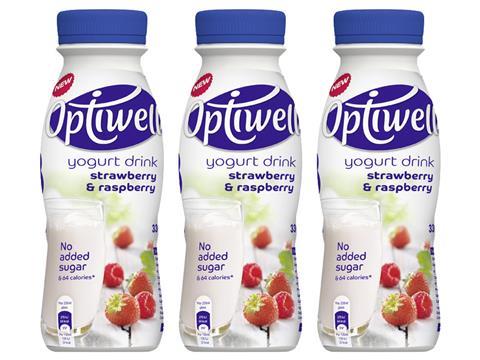
An adult yoghurt drink for health-conscious females, FrieslandCampina’s new brand (Optimel in other European markets) comes in pouring and individual formats (rsp: £1.90/1-litre and £1.30/330ml), has no added sugar and is 0% fat. In strawberry & raspberry and apricot & peach.
Arla Protein Milk Drink
Launched: August 2015
Manufacturer: Arla Foods
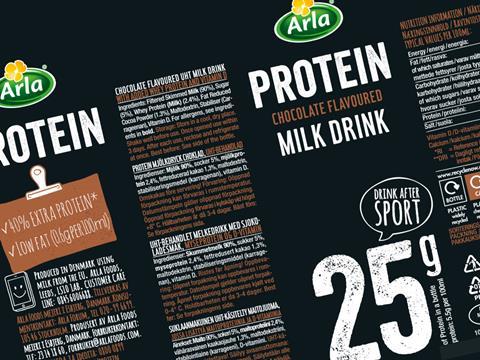
The latest release under Arla’s masterbrand and an extension of its growing protein quark-based pot snack line, this flavoured milk comes in chocolate and light chocolate with 50% less sugar variants (rsp: £1.89/479ml).
On the Go Protein
Launched: June 2015
Manufacturer: Weetabix
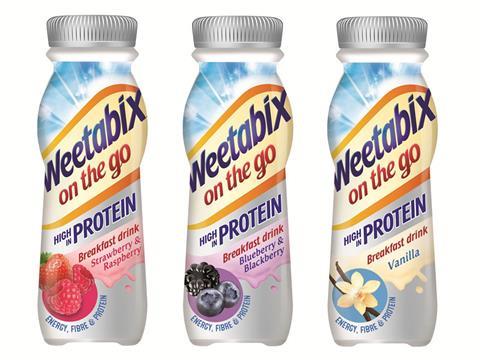
Following the launch of its On the Go breakfast drink in March 2014, Weetabix has launched a trio of milk-based protein drinks with soluble wheat fibre in vanilla, strawberry & raspberry and blueberry & blackberry (rsp: £1.99/275ml).
Shaken Udder Caramel
Launched: August 2015
Manufacturer: Shaken Udder
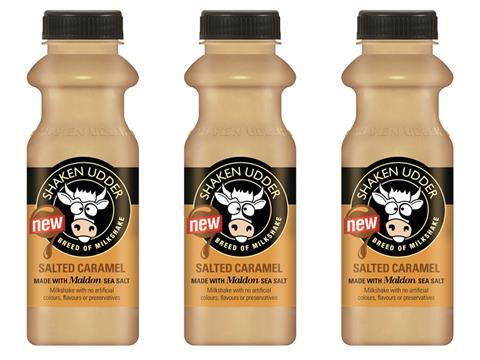
Shaken Udder’s first new flavour since 2013 (rsp: £1.49/330ml) joins the permanent line-up of Top Banana, Chocolush and Vanillalicious flavours. The premium milkshakes are made with British milk and ‘all-natural’ ingredients.







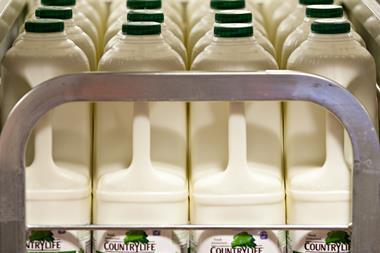
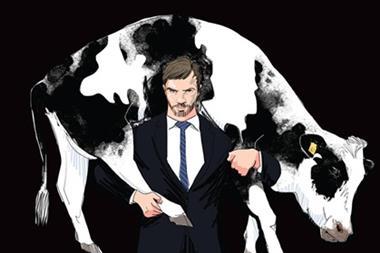


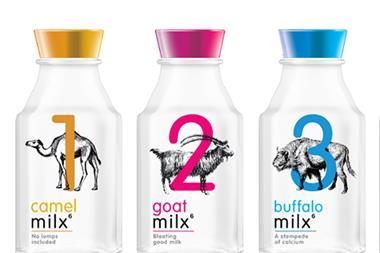



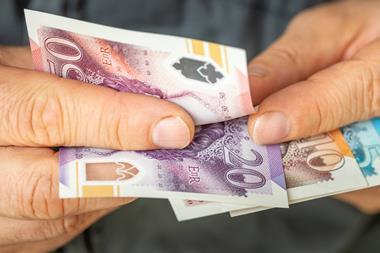


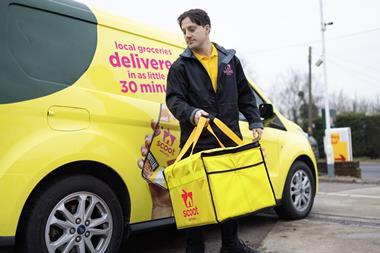
No comments yet